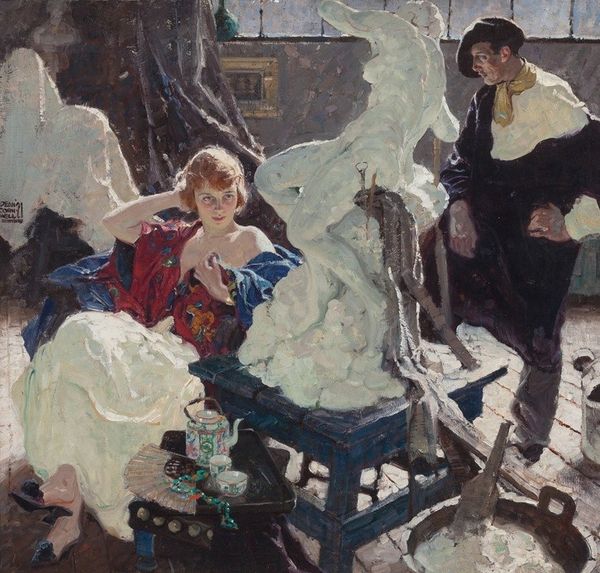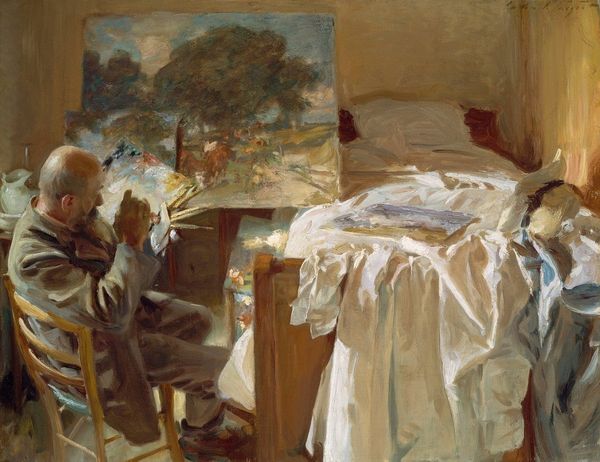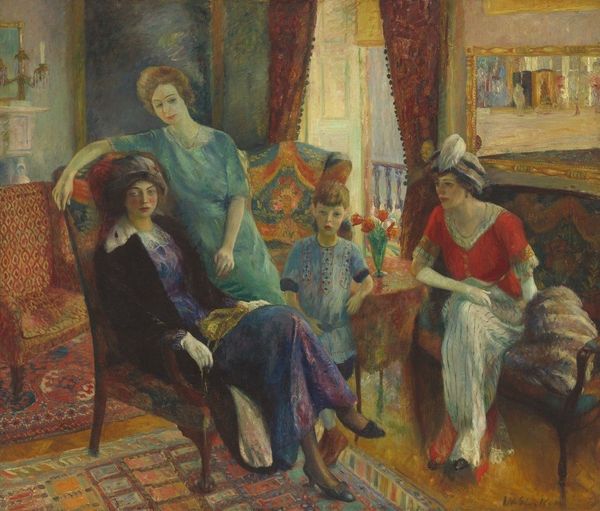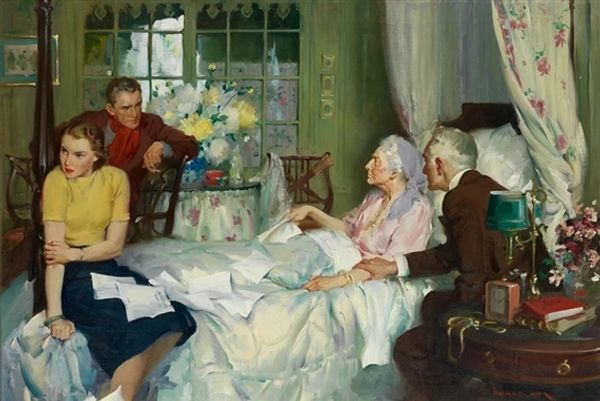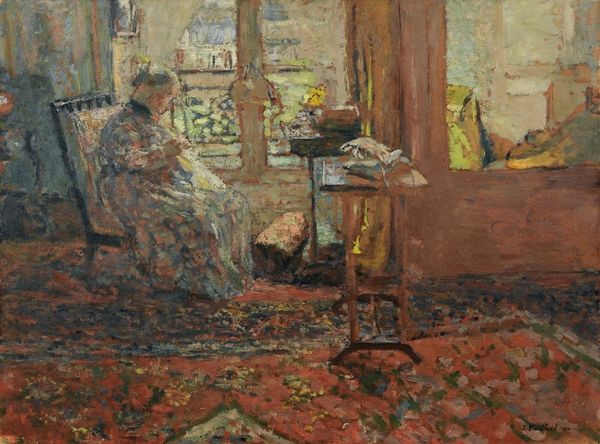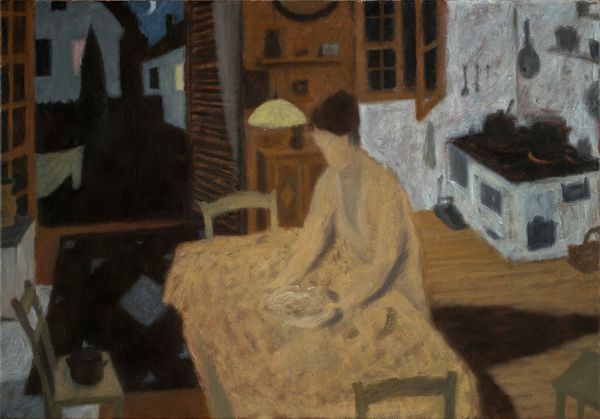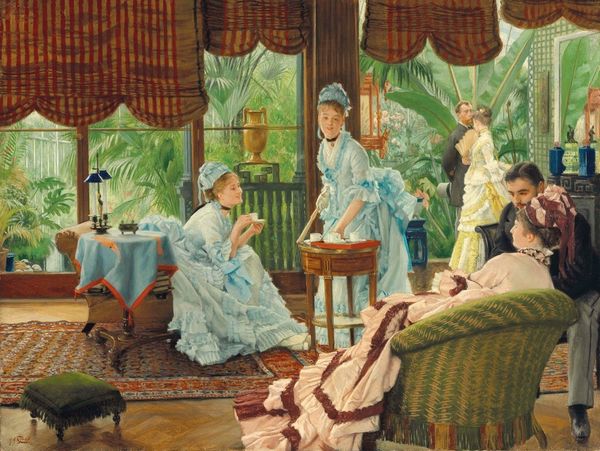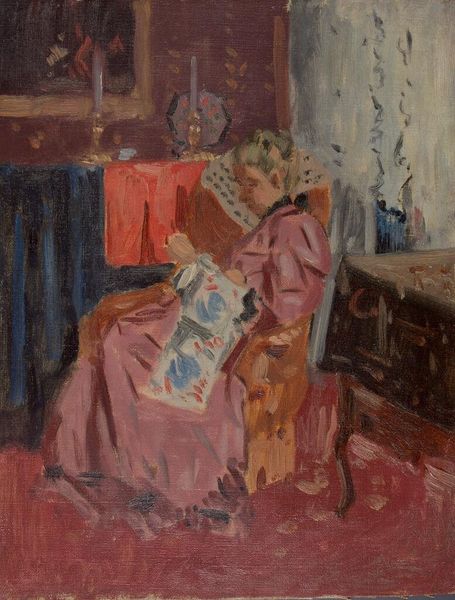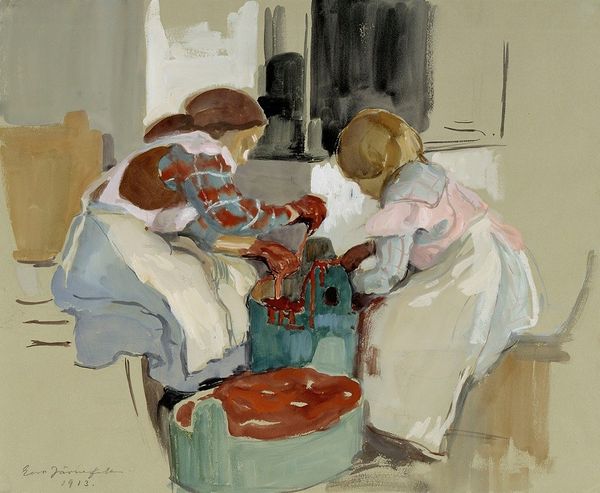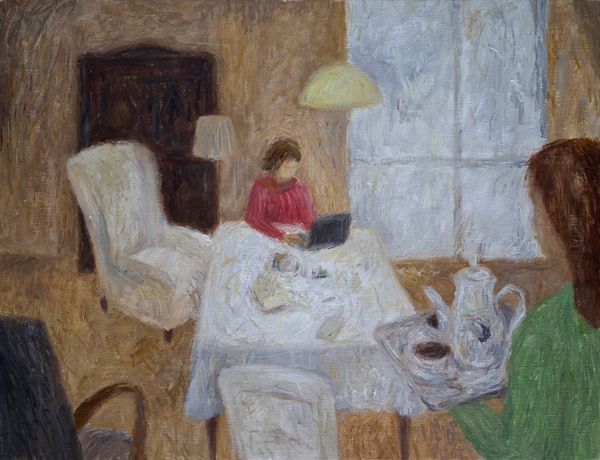
‘Gad,’ said Heseltine to Peril, ‘If the doctor can only keep me going long enough,’ 1923
0:00
0:00
oil-paint
#
portrait
#
figurative
#
oil-paint
#
painted
#
oil painting
#
painting art
#
genre-painting
#
modernism
#
watercolor
Copyright: Public Domain: Artvee
Editor: This is Dean Cornwell's '"Gad," said Heseltine to Peril, "If the doctor can only keep me going long enough,"' from 1923. It's an oil painting depicting a couple in what looks like a moment of quiet contemplation. There’s almost a palpable sense of melancholy, or perhaps weariness, about the male figure. How do you interpret this work? Curator: The weariness you sense is key. Beyond the immediate portrayal of leisure, I see a commentary on societal expectations and anxieties following the First World War. The man's pose and the woman's almost detached gaze hint at the psychological toll of a generation grappling with disillusionment. Consider, too, the context of modernism; how does Cornwell challenge or reinforce conventional gender roles of the era through the figures' relationship and positioning? Editor: That's interesting. I hadn't considered the post-war context so directly. I was more focused on the domesticity of the scene, the interior space. Curator: And that domesticity itself can be interrogated. Is it a safe haven or a gilded cage? Note the sharp blue in the woodwork, a colour which appears otherwise only on the tray and a book on the floor, what could it signify? We should look for symbolism in every colour, every gesture. The title implies there's an outside force—a doctor—that could determine destiny. How might class, privilege, and access to healthcare play a role in this narrative? Editor: I see what you mean. The title complicates the scene; there's more going on than meets the eye. Maybe that weariness isn't just personal, but a symptom of a larger societal unease. Curator: Precisely! Art becomes a powerful tool when we understand its layered connections to history, politics, and social structures. Examining who is included, who is excluded, and whose story is being told, can push us to question the world we inhabit today. Editor: Thank you for expanding my perspective. I'll definitely consider the broader historical and social implications in future encounters with art. Curator: A deeper understanding comes through constant inquiry.
Comments
No comments
Be the first to comment and join the conversation on the ultimate creative platform.
